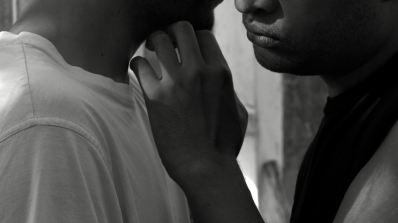Shannon Te Ao: "my life as a tunnel"
Jessica Hong, Former Associate Curator of Global Contemporary Art
Hood Quarterly, spring–summer 2021
Shannon Te Ao (Ngāti Tūwharetoa / New Zealander, born Australia, 1978) implements Māori traditions to explore the ambiguities and tensions within interpersonal relationships as well as the complex dynamics between Indigeneity, language, and loss. The starting point for Te Ao's my life as a tunnel (2018) is a scene from Charles Burnett's iconic film Killer of Sheep (1978). Toward the end of the film, protagonist Stan and his wife—whose marriage has experienced much strain—slowly dance to the haunting Clyde Otis song "This Bitter Earth," originally recorded by Dinah Washington in 1959, capturing a pivotal moment of physical and psychological exchange between two individuals.
In my life as a tunnel, two male figures move intimately together with their engagement first seeming affectionate, but there are subtle, yet palpable, moments of disquiet. We are unsure of their relationship, and with the separate screens, we can never see nor experience their movements or Te Ao's film in full. The soundtrack is an a cappella version of "This Bitter Earth" translated into te reo Māori (Māori language). For Te Ao, translation is a critical act that examines how words function in relationship to one another; a core principle of te reo Māori allows the speakers to communicate as well as to articulate a sense of place and represent their iwi (people, nation) through their use of language. More broadly, the artist sees translation as a generative act to understand the world: meanings get lost, misunderstood, recalibrated, as people strive to connect. This layered and poignant work weaves together past and present and asks: What can be found once something is lost?
my life as a tunnel was organized by the Hood Museum of Art, Dartmouth, and generously supported by William B. Jaffe and Evelyn A. Hall Fund. It is on view through April 17, 2022.

